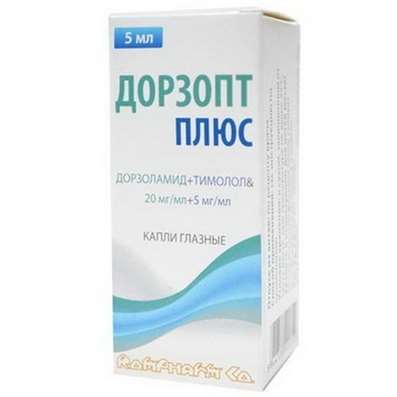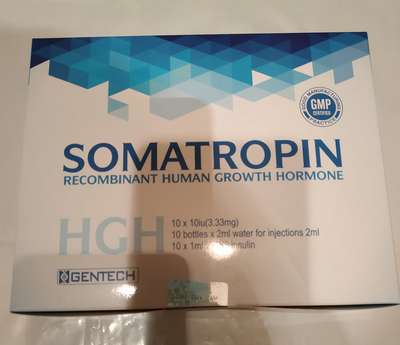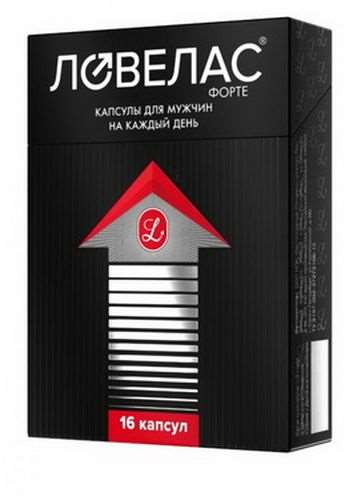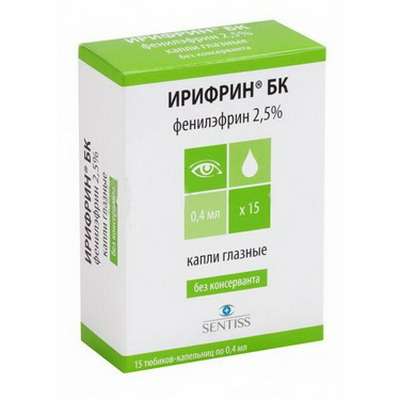Instruction for use: Nebivolol
I want this, give me price
Trade name of the drug –Bivotenz, Binelol, Nebivator, Nebivolol, Nebivolol Sandoz, Nebivolol Stada, Nebivolol –Nanolek, Nebivolol-SZ, Nebivolol-Teva, Nebivolol Chaykapharma, Nebivolol hydrochioride, Nebicor Adipharm, Nebilan Lannacher, Nebilong, Nevotens, OD-Neb
The Latin name of the substance Nebivolol
Nebivololum (genus. Nebivololi)
Chemical rational name: alpha, alpha '- [Iminobis (methylene) bis [6-fluoro-3,4-dihydro] -2H-1-benzopyran-2-methanol; racemate consisting of D- and L-enantiomers
Gross formula C22H25F2NO4
Pharmacotherapeutic group: Beta-blockers
The nosological classification (ICD-10)
I10 Essential (primary) hypertension: hypertension; Arterial hypertension; Arterial hypertension crisis course; Essential Hypertension; Essential hypertension; Essential hypertension; Essential hypertension; Essential hypertension; Primary hypertension; Arterial hypertension, complications of diabetes; The sudden increase in blood pressure; Hypertensive disorders of blood circulation; hypertensive condition; hypertensive crises; arterial Hypertension; malignant Hypertension; Hypertonic disease; hypertensive crises; accelerated hypertension; malignant hypertension; The aggravation of hypertensive disease; Transient hypertension; Isolated systolic hypertension
I15 Secondary hypertension: Arterial hypertension, complications of diabetes; hypertension; The sudden increase in blood pressure; Hypertensive disorders of blood circulation; hypertensive condition; hypertensive crises; hypertension; arterial Hypertension; malignant Hypertension; hypertensive crises; accelerated hypertension; malignant hypertension; The aggravation of hypertensive disease; Transient hypertension; hypertension; Arterial hypertension; Arterial hypertension crisis course; renovascular hypertension; Hypertension symptomatic; Renal hypertension; Renovascular hypertension; renovascular hypertension; Symptomatic hypertension
I20 Angina [angina]: Heberden disease; Angina pectoris; The attack of angina pectoris; recurrent angina; Spontaneous angina; Stable angina pectoris; Angina rest; Angina progressing; Angina mixed; Angina spontaneous; stable angina; Chronic stable angina; Angina Syndrome X
CAS code 99200-09-6
Description
Nebivolol hydrochloride - white or almost white powder. Soluble in methanol, dimethylsulfoxide and N, N-dimethylformamide; it is soluble in ethanol, propylene glycol and polyethylene glycol; very slightly soluble in hexane, methylbenzene and dichloromethane.
Pharmacological Properties of Nebivolol
Pharmachologic effect - antianginal, hypotensive, anti-arrhythmic.
Selectively blocking beta1-adrenergic receptors, modulating the synthesis of endothelium-derived relaxing factor (NO). Lowering the blood pressure due to a decrease in cardiac output, bcc, PR, education renin inhibition, partial loss of baroreceptor sensitivity. Antihypertensive effect usually develops in 1-2 weeks and stabilized for 4 weeks. Lowers the heart rate at rest and during exercise, Dad left ventricle, improves diastolic filling of the heart, reducing myocardial oxygen demand (antianginal activity) reduces myocardial mass (9.7%) and myocardial mass index (5.1%). According to the daily monitoring of a positive effect on the circadian rhythm of blood pressure in patients with both normal and with rhythm disturbances. It has no negative impact on lipid metabolism.
In experimental studies in mice at a dose of 40 mg / kg increases the frequency of occurrence of benign tumors of the testis interstitial cells.
If ingestion is rapidly absorbed. Bioavailability is 12% in those with "fast" metabolism (the effect of "first pass" through the liver) and is almost complete in patients with "slow". Associated with the plasma protein by 98%. The equilibrium concentration in people with "fast" metabolism is achieved within 24 hours, T1 / 2 is about 10 hours at a "slow" - 3-5 times more. Converted by hydroxylation of alicyclic and aromatic, partially N-dealkylated; the resulting hydroxy- and amino derivatives conjugated with glucuronic acid and excreted in the form of O- and N-glucuronides. T1 / 2 gidroksimetabolitov for people with "fast" metabolism averages 24 hours, with the "slow" - 2 times greater. Excreted by the kidneys (40%) and gut (60%). Penetrates through the BBB, is secreted into breast milk.
Actualization of information
Effects on reproductive function
The two-year study in mice nebivolol, a statistically significant increase in the incidence of testicular tissue hyperplasia and adenomas eggs when administered at a dose of 40 mg / kg per day (5-fold higher MRDC of 40 mg / m2).
Application of the substance Nebivolol
Arterial hypertension (monotherapy or in combination with other antihypertensive agents), coronary heart disease, exertional angina.
Contraindications for Nebivolol
Hypersensitivity, sinus bradycardia (less than 45-50 beats / min.), Hypotension, cardiogenic shock, sick sinus syndrome; AV (atrioventricular) block II-III degree, refractory to the treatment of severe heart failure; the peripheral blood circulation, sinoatrial block, liver function abnormalities, asthma, bronchospasm, pregnancy, lactation, children's age.
Restrictions to application
The tendency to bradycardia, diabetes, hyperthyroidism, psoriasis, allergic history, advanced age (over 75 years).
Pregnancy and breast-feeding
When pregnancy is possible only under strict indications.
Category effects on the fetus by FDA - C.
At the time of treatment should stop breastfeeding.
Actualization of information
Additional information on the use of nebivolol in pregnancy: Studies in vivo data
In rat studies, it was shown that nebivolol and its metabolites are able to penetrate the blood-barrier. When administered nebivolol female rats in late pregnancy, during childbirth and lactation at doses of 1.25 mg / kg and 2.5 mg / kg per day, the newborn pups, a decrease in body weight. When administered at a dose of 5 mg / kg per day or more prolonged pregnancy was observed in rats, violation of labor, and reduced care for the offspring, which was accompanied by an increase in fetal death and stillbirth, birth of babies with reduced body mass and a decrease in offspring survival. Rate the reproductive capacity of the offspring was not possible, due to the insufficient number of surviving offspring.
In studies on rats when administered nebivolol in early pregnancy in doses of 20-40 mg / kg per day, the pups there was a decrease in body weight, the time delay of ossification of the sternum and the ribs, increased bone resorption. When administered nebivolol pregnancy in rabbits at a dose of 20 mg / kg per day, adverse effects in the offspring were observed.
Additional information on the use of nebivolol in lactation: Studies in vivo data
In rat studies, it was shown that nebivolol and its metabolites can be excreted in breast milk. However, it is not known whether nebivolol is excreted in breast milk in humans. However, given the potential for adverse effects? Blockers, which may occur in the newborn, such as bradycardia, nebivolol is not recommended for use in nursing women.
Side effect of Nebivolol
From the nervous system and sensory organs: 1-10% of cases - headache, dizziness, tiredness (fatigue), paresthesia; Less than 1% of cases - depression, nightmares; transient blurred vision.
From the digestive tract: 1% of cases and more - nausea, vomiting, constipation; flatulence, diarrhea.
Cardio-vascular system and blood (blood, hemostasis): symptomatic bradycardia, AV block, hypotension, heart failure, exacerbation of intermittent claudication.
Other: skin reactions, bronchospasm.
Actualization of information
The safety of nebivolol on clinical trials
In placebo-controlled clinical study comparing safety of nebivolol and placebo due to adverse reactions therapy was stopped in 2.8% of cases in patients treated with nebivolol and 2.2% of cases in patients treated with placebo. The most common adverse events that led to the cancellation of nebivolol, include headache (0.4%), nausea (0.2%) and bradycardia (0.2%).
Conducted a 12-week placebo-controlled clinical study, which included 1597 patients with hypertension treated with nebivolol in doses of 5, 10, or 20-40 mg, and 205 patients receiving placebo showed that the frequency of adverse events in patients treated with nebivolol is at at least 1%, and much higher than the frequency of adverse events in the placebo group (see. Table.).
Table. The frequency of adverse events occurred in patients treated with nebivolol that developed at a frequency of at least 1% or greater than that in the placebo group.
| Body System / Type of violation | Placebo (N = 205),% | Nebivolol 5 mg (N = 459),% | Nebivolol 10 mg (N = 461),% | Nebivolol 20-40 mg (N = 677),% |
| The cardiovascular system bradycardia |
0 | 0 | 0 | 1 |
| Digestive tract Diarrhea Nausea | 2 0 | 2 1 | 2 3 | 3 2 |
| Common disorders Fatigue Backache Peripheral edema | 1 0 0 | 2 0 1 | 2 1 1 | 5 1 1 |
| Nervous system Headache Dizziness | 6 2 | 9 2 | 6 3 | 7 4 |
| Psycho-emotional sphere Insomnia | 0 | 1 | 1 | 1 |
| Respiratory system dyspnea | 0 | 0 | 1 | 1 |
| Leather Rash | 0 | 0 | 1 | 1 |
Changes in the blood laboratory parameters when taking Nebivolol
In nebivolol studies conducted in patients with hypertension, a number of deviations from normal laboratory values were found. In particular, the observed association between nebivolol and an increase in blood plasma levels of uric acid, triglycerides, cholesterol and decreased levels of high density lipoproteins, and platelet count.
Interaction
calcium channel blockers increase AV conduction blockade, antiarrhythmics class I and amiodarone prolong the time of driving the atria. Anaesthetic agents (cyclopropane, diethyl ether, trichlorethylene), tricyclic antidepressants, barbiturates, phenothiazine derivatives potentiate hypotension, cimetidine and increase nicardipine plasma concentration negate sympathomimetic activity.
Actualization of information
For more information about drug interactions nebivolol
Fluoxetine, when receiving healthy patients for 21 days at a dose of 20 mg per day with nebivolol 10 mg per day, caused an increase in AUC and an 8 times increase in Cmax of nebivolol to 3 times.
Receiving cimetidine 400 mg 2 times a day nebivolol increased plasma levels by 23%.
Cardiac glycosides, like slow nebivolol reduce atrioventricular conduction and heart rate, so their combined use increases the risk of bradycardia.
Overdose
Symptoms: bradycardia, hypotension, bronchospasm, acute cardiac insufficiency.
Treatment: gastric lavage, activated charcoal, the appointment of laxatives; possible ventilator and atropine (bradycardia and increased vagotonia), plasma or plasma substitutes, if necessary - catecholamines. For relief of beta-adrenoceptor blocking action - isoprenaline hydrochloride (slow I / O, the initial dose of 5 mg / min to achieve the desired effect), dobutamine (at an initial dose - 2.5 g / min), with no effect - glucagon (in / 50-100 mcg / kg, again after 1 hour - 70 ug / kg / hr infusion). When AV blockade - transvenous pacing.
Routes of administration
Inside.
Precautions for substance Nebivolol
Discontinue therapy should be gradual (over 1-2 weeks). Slowing of the heart rate to 55 beats. / Min require dose reduction. Against the background of diabetes can disguise signs of hypoglycemia, when hyperthyroidism - tachycardia. May enhance the reaction to pollen or other allergens. It is necessary to cancel 24 hours before surgery with general anesthesia (including dental surgery) or select an anesthetic with the least negative inotropic effect. If necessary, the simultaneous administration of antacids Nebivolol is taken with meals, and antacids - between meals. Be wary of during the drivers of vehicles and people skills relate to the high concentration of attention. At the time of treatment is recommended to exclude alcohol intake.

 Cart
Cart





